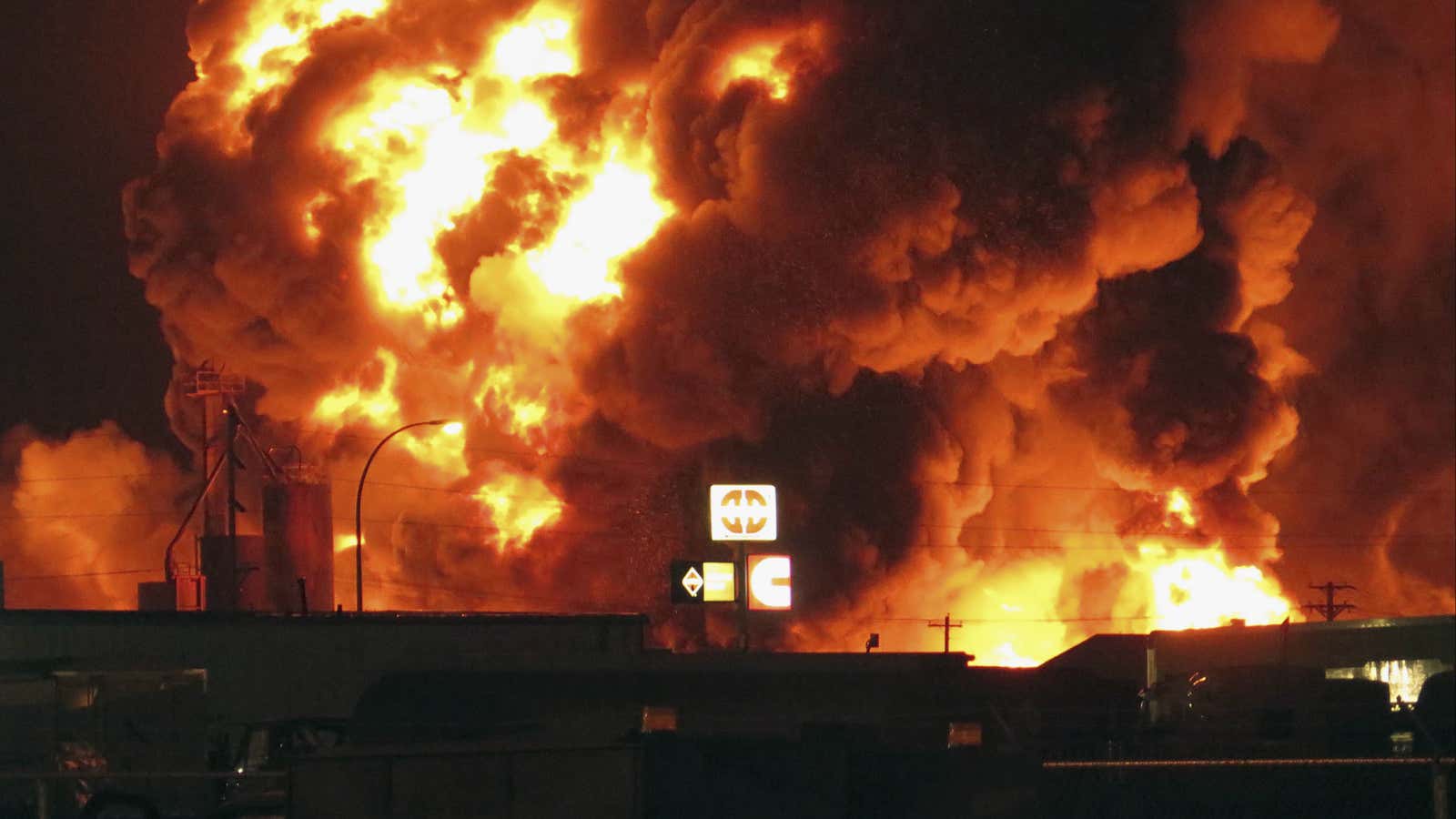It’s likely only a matter of time.
First off, let’s be clear. The collapse in oil prices is pretty much the best thing that’s happened to the global economy since the end of the Great Recession. (And that’s not just our view, ex-Wall Street Journal economics editor David Wessel, now of the Brookings Institution, says pretty much the same thing.)
Yet, we’ve recently seen the US financial markets assume something like a defensive crouch. US stocks are down about 3% so far this month. Bond prices are rising, pushing interest rates—which move in the opposite direction—lower. This is what happens when global investors are bracing for a gut-punch.
This is about more than oil. The decline in oil prices—the global benchmark of Brent crude is down 48% over the last six months—is part of a particularly fast reshuffling of economic facts that’s whipsawed the world’s financial indicators. Investors have suddenly woken up to the fact that the global economy today looks much different than the one that they’ve been betting on in recent years.
China—long the nuclear core powering global economic growth—looks downright weak, hammering prices of key industrial ingredients such as crude oil and iron ore. Emerging market populations—long seen as the consumers needed to power global aggregate demand—are looking increasingly over-indebted, while consumers in rich countries have gotten their finances in order. The United States’s economic wheels, stuck in the mud for much of the last decade, have finally gripped the ground, jerking the economy forward, and taking the US dollar with it. As measured by the ICE US dollar index—it’s up 9.9% this year.
In the face of such momentous changes it would be logical for investors to take a breather and survey the new topography. Let’s hope. But financial history would suggest that there are many–people, and perhaps some very large entities—that never saw these shifts coming. And they will be woefully offsides on their trades.
It doesn’t take much. Back in the summer of 1997, few would have suspected that the devaluation of the Thai baht would be a big deal for the world’s financial markets. Relatively speaking, it was an insignificant speck in the global economic system. But it presaged a riptide of cash flowing out of developing Asian economies, reversing a strong inflow over the previous years. Currency crises popped up in Philippines, Malaysia and South Korea. Asian companies began defaulting as the crisis smoldered through the fall.
Soon the speculative currency attack spread to Russia, driving the value of the Ruble sharply lower and Russian markets into free fall. Russia’s eventual default in August 1998 sent a massive hedge fund known as Long-Term Capital Management into a tailspin. The fund had borrowed money from most of Wall Street, so its collapse threatened to bring down the US financial system as a whole. The result? A Fed-organized $3.6 billion bailout paid for by by a consortium of Wall Street investment banks.
The saga of Long-Term Capital Management looms large in the psyche of global markets. The Long-Term Capital Management brain trust included some of the smartest people in both academia (two were Nobel laureates in economics) and on Wall Street (personified by legendary Salomon Brothers bond trader John Meriwether). And yet all that economic and trading genius—transferred to the trading models the firm used—was not able to foresee the series of events that eventually doomed the firm.
Simply put, this is not about being smart. Very few people saw that the flap of the butterfly wings that was a Thai baht devaluation would turn into the serious Wall Street storm represented by Long-Term Capital Management. So it defies belief that such sharp movements in far more central markets—such as oil and the US dollar—won’t have some sort of unexpected repercussion.
And that’s what we’re now waiting for. Hold on tight.
